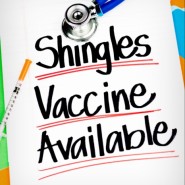AARP Hearing Center
Shingles Vaccine May Be out of Reach for Some Medicare Beneficiaries
By Leigh Purvis and Lynda Flowers, February 19, 2016 03:20 PM
Introduction to Shingles

Shingles is a viral infection that causes a painful skin rash. It is caused by the varicella-zoster virus — the same virus that causes chicken pox. Once people recover from chicken pox, the virus remains in their body in an inactive state. In some people, it stays dormant; in others, the virus reactivates and causes shingles. The condition is most common in older adults and people with weakened immune systems.
The most common complication of shingles is post-herpetic neuralgia (PHN) — severe debilitating pain in the areas where the shingles rash appeared. The pain can last anywhere from a few weeks to years.
Fortunately, a shingles vaccine is available that substantially reduces the risk of getting shingles and PHN. The Advisory Committee on Immunization Practices (ACIP) — an expert advisory panel to the federal government — recommends that all individuals receive the shingles vaccine beginning at age 60, regardless of whether they have had chicken pox. The vaccine is effective for only about five years, so many adults will need repeated vaccinations to remain protected.
However, many older Americans have not received the shingles vaccine. Experts have linked this finding to a variety of factors, including cost. With a price of around $200, the shingles vaccine is the most expensive vaccine recommended for older adults. Another important factor is health care coverage for the vaccine, which can vary considerably.
Medicare Coverage for Shingles Vaccine Is Problematic
The Affordable Care Act requires private insurers to eliminate cost-sharing for ACIP-recommended vaccines. Thus, many privately insured individuals age 60 and older do not pay anything when they receive the shingles vaccine.
Unfortunately, Medicare coverage for the shingles vaccine is not quite as generous. While Medicare Part B covers a small number of vaccines with no cost-sharing, the shingles vaccine is covered under Medicare Part D. Part D plans are required to cover the vaccine; however, they have a fair amount of leeway in terms of how they cover it. For example, some plans require a high level of cost-sharing, while others require enrollees’ prescribers to explain why the vaccine is medically necessary before they will approve its use.
Another challenge stems from the Part D benefit design. Enrollees who receive the shingles vaccine prior to meeting their deductible are responsible for the full $200 cost.
In addition, many health care providers do not have a billing system that allows them to file claims with Part D plans. Enrollees who receive the shingles vaccine under such circumstances typically must pay for the vaccine up front and submit a claim to their Part D plan for reimbursement. The financial and administrative challenges associated with this process could understandably encourage some enrollees to simply skip the vaccine.
What to Do?
Medicare coverage can lead to high out-of-pocket costs and administrative hurdles that limit access to the shingles vaccine. These obstacles are particularly concerning given that Medicare beneficiaries have the greatest need for this type of immunization. The Centers for Medicare & Medicaid Services should work with Part D plans and health care providers to ensure that unnecessary barriers do not limit access to this important preventive service.

Leigh Purvis is the director of health services research in AARP’s Public Policy Institute. Her primary areas of expertise are prescription drug pricing, biologic drugs and prescription drug coverage.

Lynda Flowers is a senior strategic policy adviser in AARP’s Public Policy Institute. She specializes in Medicaid issues, health disparities and public health.































































